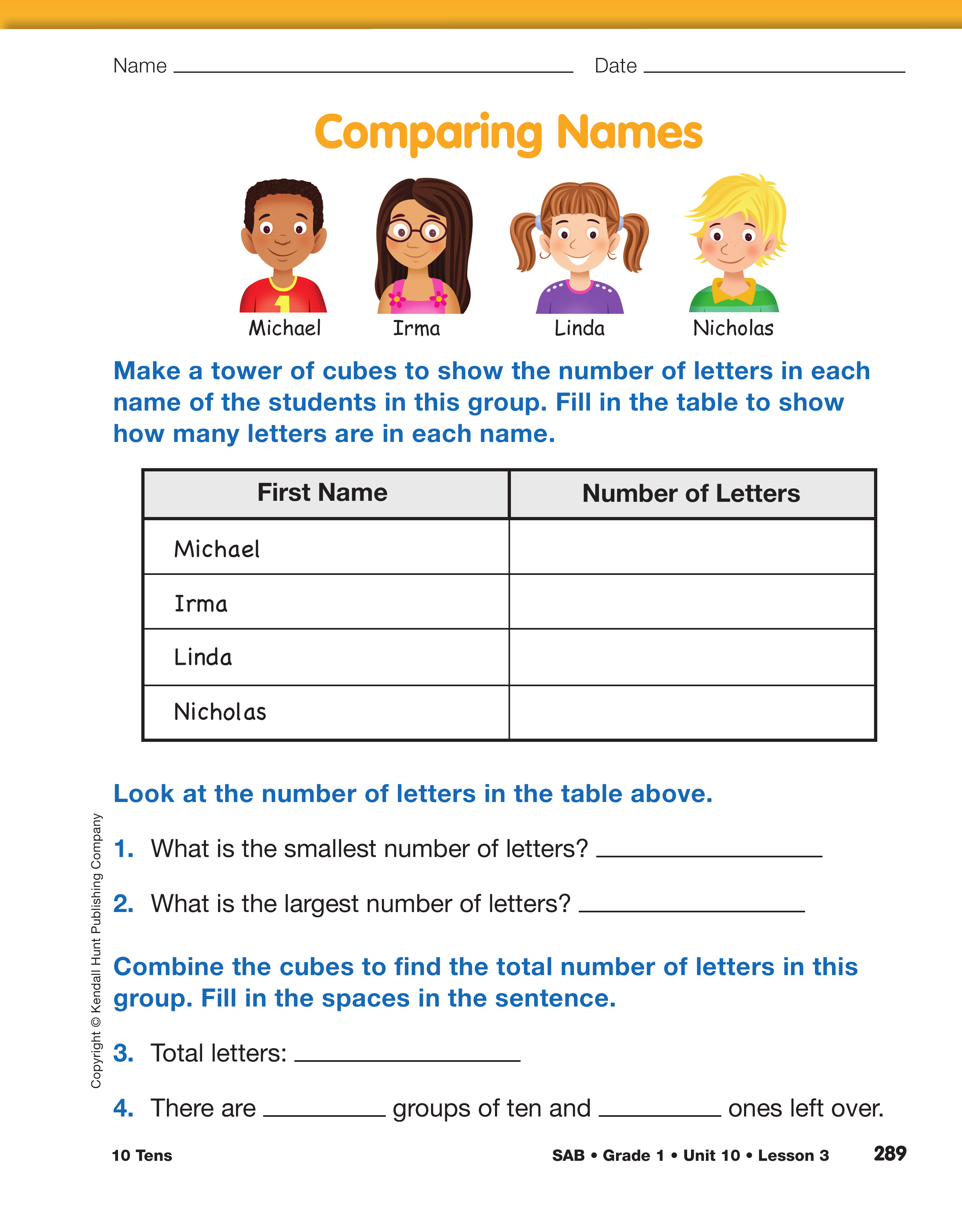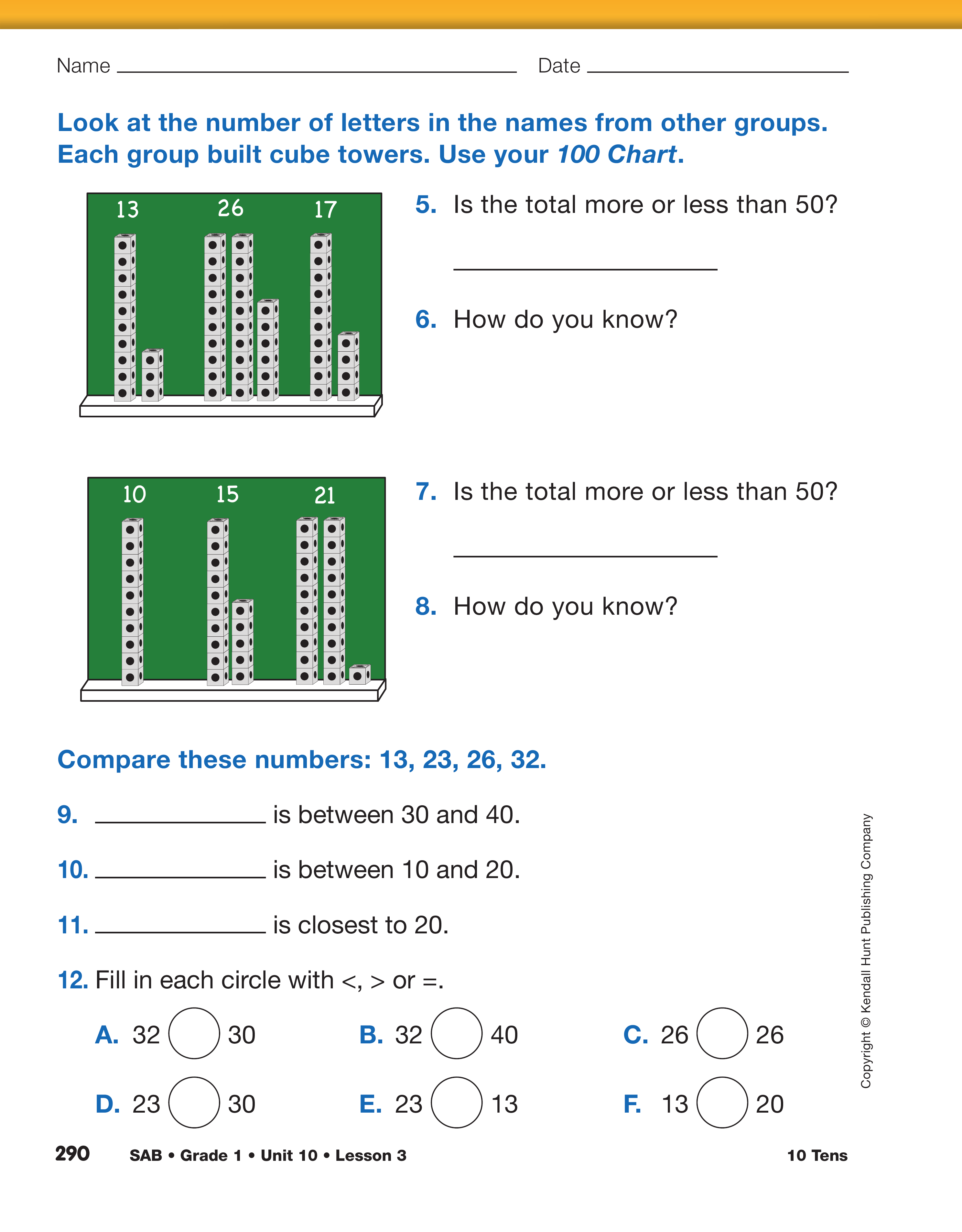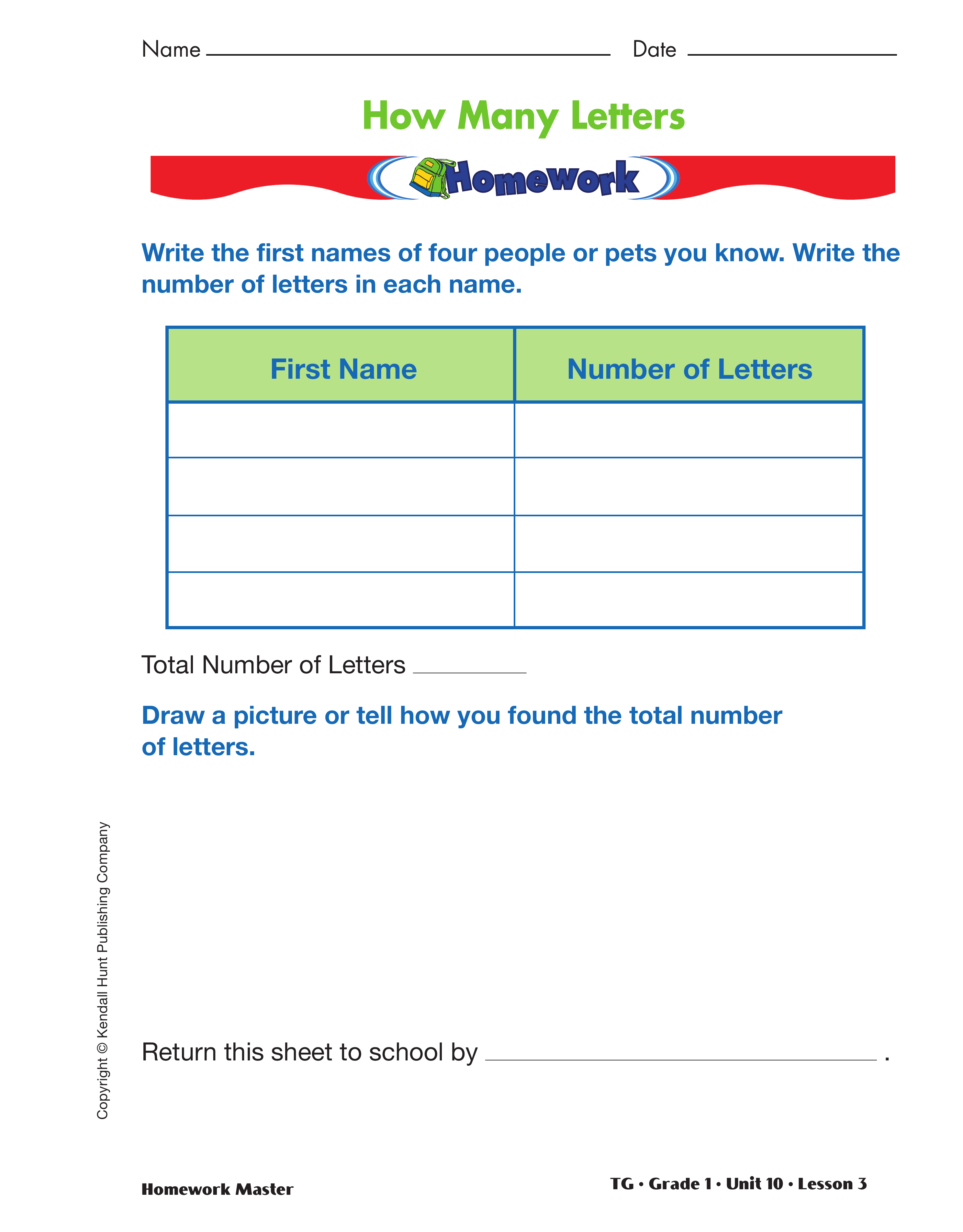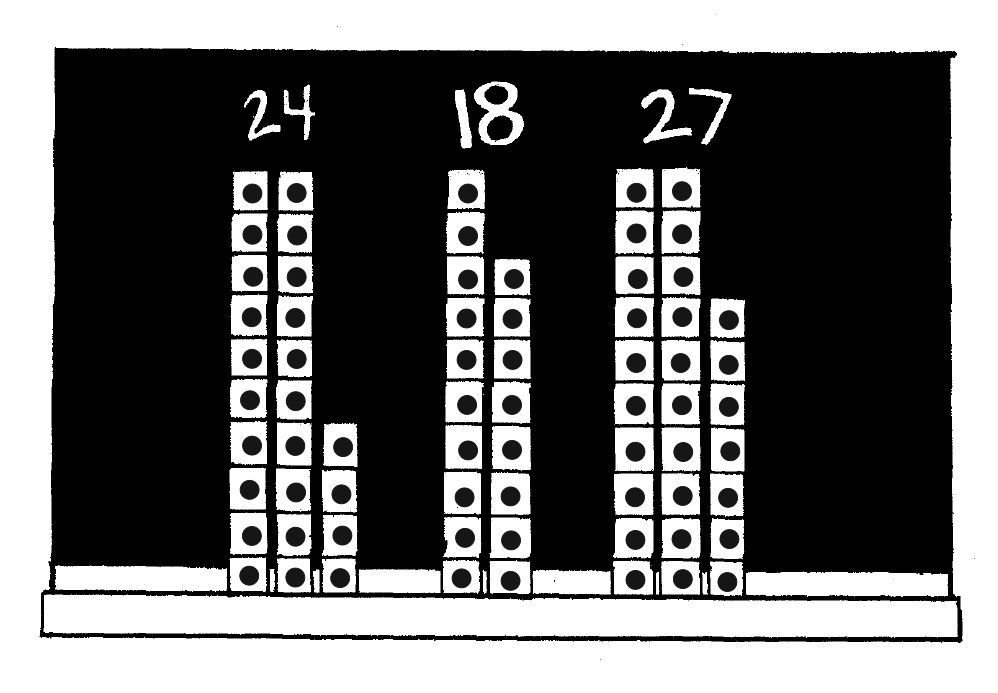10 Tens
Est. Class Sessions: 1–2Developing the Lesson
Compare the Number of Letters in Names. Ask students to count the letters in their first names. For example, Anna has four letters in her first name. Have volunteers share their numbers with the class.
Ask:
Assign students to groups of four and distribute 30 connecting cubes to each group. Ask each student to make a stack of connecting cubes to show the number of letters in his or her name. Have them compare the heights of their stacks within their groups. When everyone is ready, ask students to think of some sentences that describe the number of letters in the names in their group. Help them get started by giving examples such as the following:
- The greatest number of letters is ________ .
- The smallest number of letters is ________ .
- ________ names have six letters.
- We all have the same number of letters. We each have ________ letters in our names.
- Nicholas has more letters in his name than Grace.
- Shannon's name has two more letters than Jacob's.
Encourage students to think of their own sentences and then share them with the class.
Find Total Letters for Group. Now ask each group to combine the stacks for all their names into stacks of ten cubes and a stack of leftover ones. Give the students a few minutes to discuss among themselves how best to do this. It is important that they put away any extra cubes that were not used in building their name stacks so these cubes don't get mixed into the group totals. When they find their total, have them locate the total number of letters on the 100 Chart in the Student Activity Book Reference section.
Ask each group to report their total number of letters so you can record the results on the board. Have students set the stacks of ten cubes and leftover cubes on the tray of the board below the number as shown in Figure 1.
Count by Tens and Leftovers. When all the stacks from the groups have been displayed and the totals written on the board, step back and have the students look at them. Ask the students to think about the numbers they see.
Ask a few open-ended, reflective questions:
If no one suggests rearranging the stacks so that all the ten-stacks are together, start out counting from left to right. Have the class count along with you and start counting by tens. As soon as you come to a stack of ones, it should become apparent that it might be easier to put all the ten stacks together and count them first. Have some student volunteers rearrange the stacks so the tens come first and have others put the ones-stacks together to make stacks of ten. Make sure that the numbers written on the board for each group's totals are not erased.
Some students may suggest using a calculator to find the total. Tell them that using a calculator is also a good way and that the class will check its work at the end using their calculators.
When all the stacks have been rearranged, have the class count aloud with you, counting by tens. At 100, stop and ask:
Continue counting until you have the total of all the letters. At this point, repeat counting the stacks of ten cubes and leftover ones and ask a student to point to the numbers on the classroom number line as the class says them. To check the results, have students use calculators to add the numbers gathered from each group, which should still be on the board.
Collect Letters in More Names. Assign the How Many Letters Homework Master. After the students hand in their homework, tell the class how many students turned in data, and then ask them to predict the total number of letters in all the names collected on the homework pages.
Ask:
Make this discussion a playful encounter with larger numbers.
Organize students into groups of four and have each group find the total number of letters in the names on the homework page.
Record the total from each group on the board and ask:
Conclude by having students use their calculators to find the total number of letters collected by the class.
Comparing Numbers. Refer students to the Comparing Names pages in the Student Activity Book. Tell pairs of students to use connecting cubes and their 100 Charts to answer the questions.


















